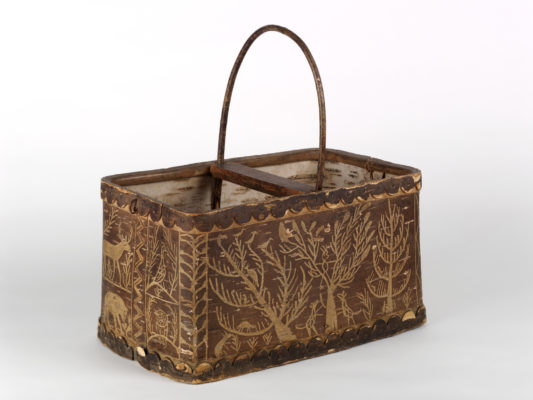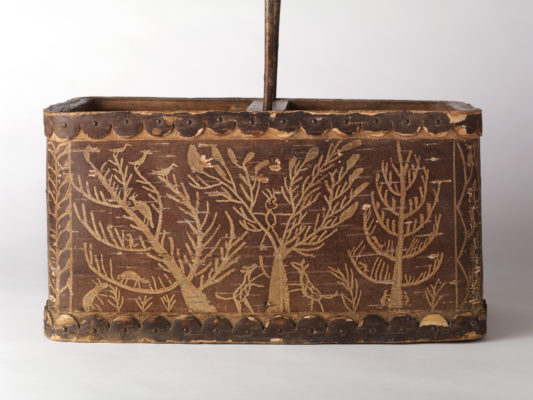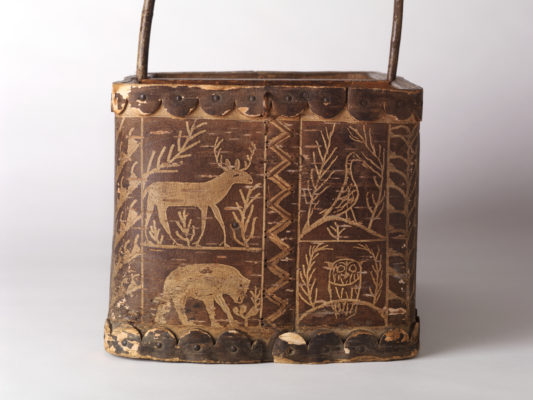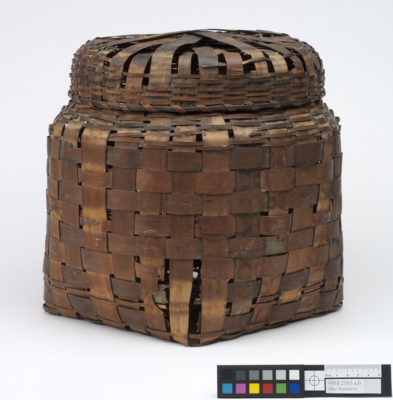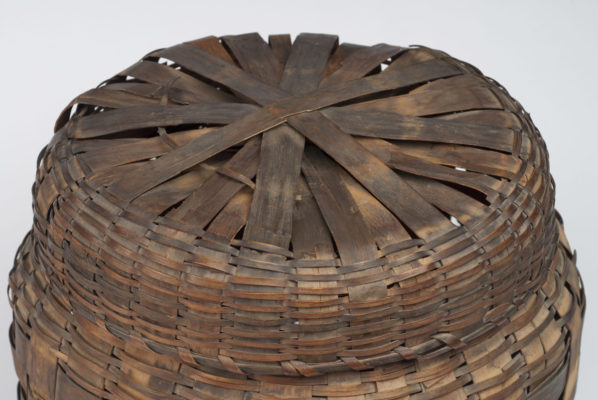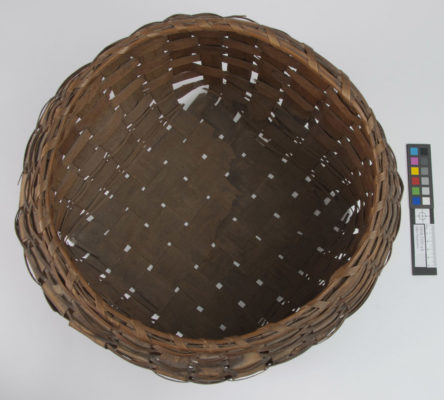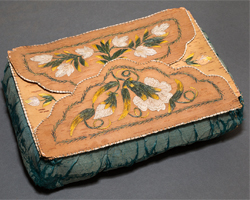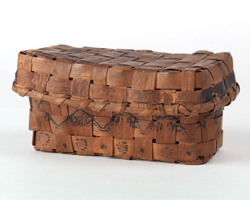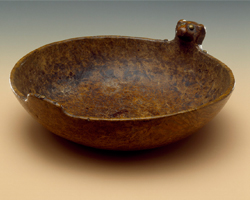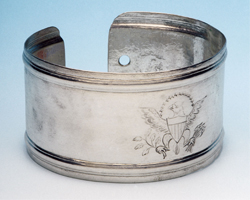Made for the Trade
Native Americans have been making things to trade and sell to non-Native groups since the sixteenth century. Early explorers, eighteenth-century colonists, and nineteenth- and twentieth-century “tourists” and collectors have all had an interest in handmade Native American objects for one reason or another.
Early on, Native American objects were acquired for functional purposes. In the 1800s, people were more interested in the objects as exotic souvenirs of the supposed “disappearing Indian.” By the early 1900s, the items were considered decorative arts objects to be acquired and displayed by collectors such as Henry Francis du Pont.
No matter the reason for their purchase or trade, the objects in this exhibition—all extraordinary examples of good design—were made to be enjoyed.
This picnic basket is made from birchbark. The loops where the lid attached on each end are still visible. A humorous scene on one side shows the hunter as the one being hunted: the deer stole his bow and chased him up the tree. The small owl on one end is a version of the ideogram used by Maine’s best-known birchbark artist, Tomah Joseph. Joseph, a Passamaquoddy chief, worked as a guide for the many tourists who began visiting Maine in the 1910s and 1920s.
Picnic basket
Tomah Joseph
Passamaquoddy, Maine; 1900–1930
Birchbark, cedar, alder, nails
1964.793 Bequest of Henry Francis du Pont
Birchbark decorating and folding: how did they make it?
An artisan first peeled the outer bark of the paper, or white, birch from the tree. The soft bark was cut, folded, and sewn into shape. Designs were then scratched on the inside surface, which is a warm red color.
Baskets were one of the many types of objects that were purchased. Some of these baskets have survived with notes that explain who owned them and how they came into the family, which shows how these objects were treasured for their artistry and utility.

Don’t let the muted brown of this basket fool you. It was originally swabbed in red and blue, a bright checkerboard of color. Basket peddlers were an important part of the regional economy, and many formed long, friendly relationships with their customers. One of the best-known Paugussett peddlers, Molly Hatchett, made several trips a year through the region to sell her wares. She often carried tiny basket rattles filled with corn kernels for new babies on her route.
Covered storage basket
Unknown Paugussett or Schaghticoke artist
South central Connecticut; 1800–1825
Ash, swabbed with Spanish brown and bluing
1958.2593 a,b Bequest of Henry Francis du Pont


